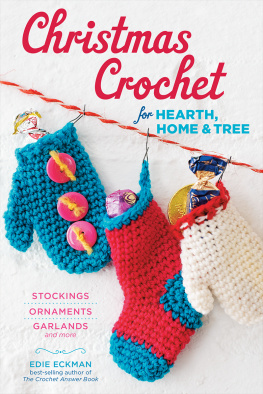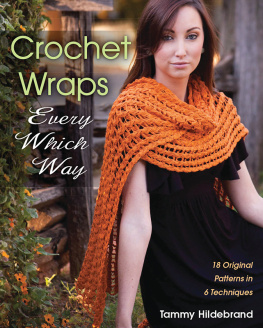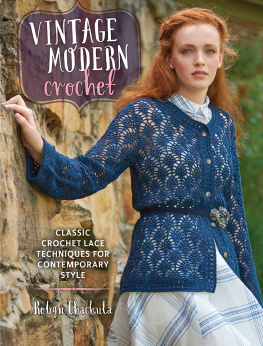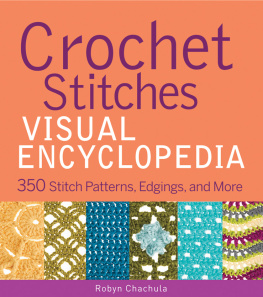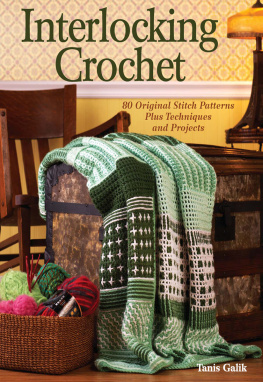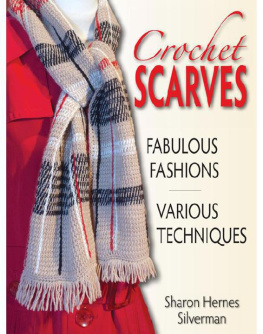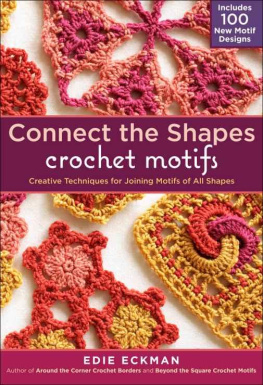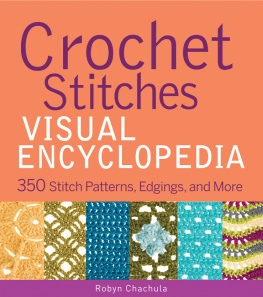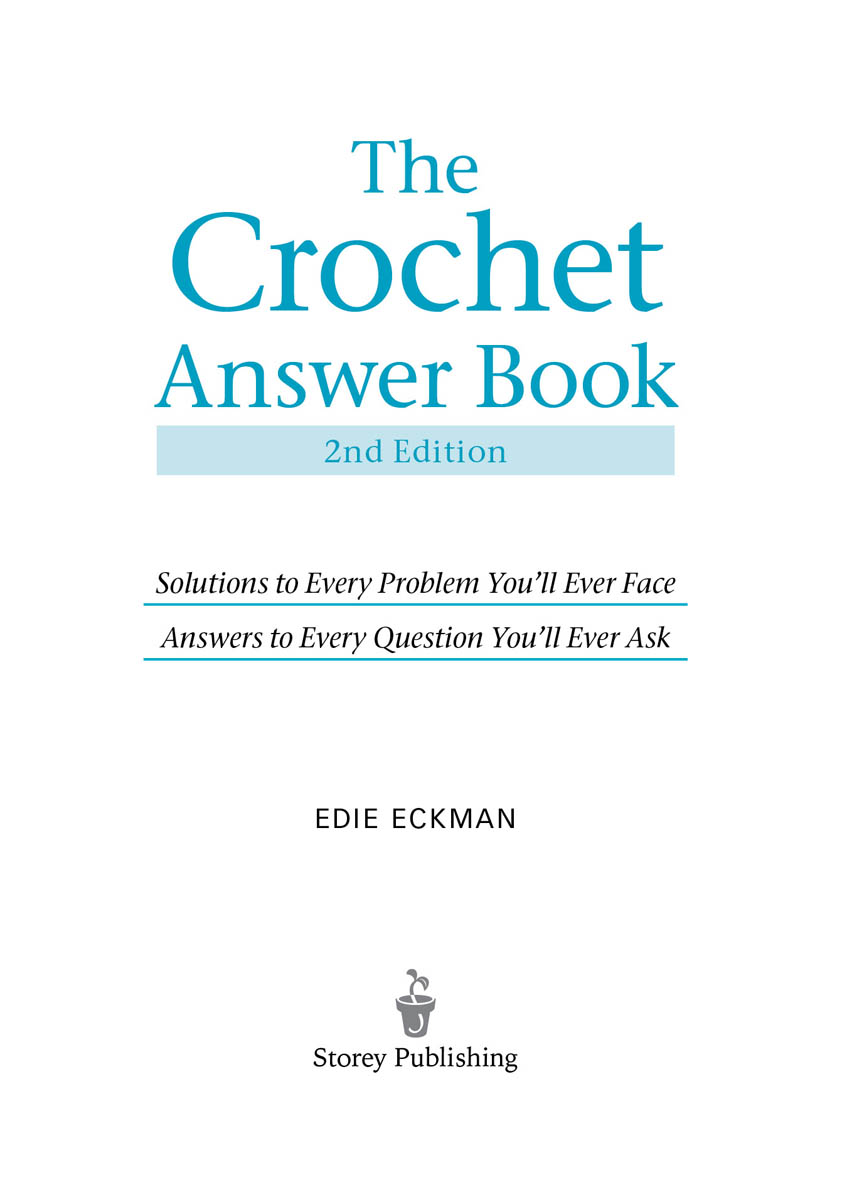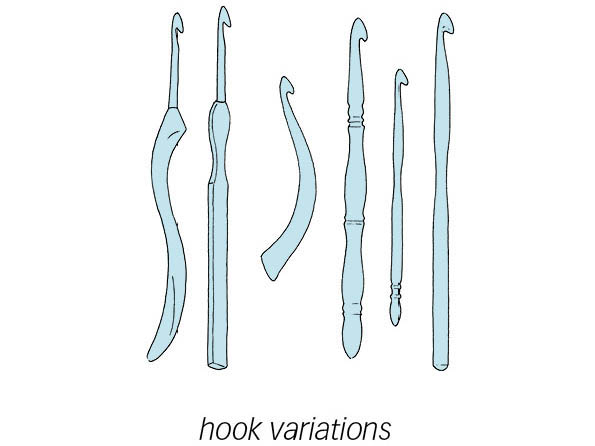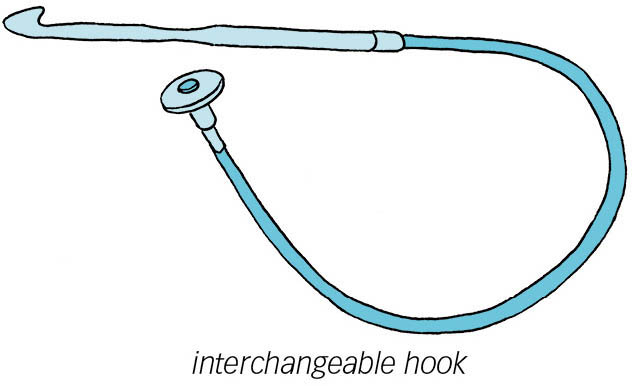Once again, and always, to Bill, Meg, and Charles, for their unwavering support and love, and to Tyler, for keeping me company
Contents
introduction
All You Have to Do Is Ask!
Its been almost ten years since I first attempted to answer the questions most often asked by crocheters, and in that time, as they say, a lot has changed. Electronic devices are always at hand, crochets popularity has grown, Ravelry was born, and crochet patterns are often presented in graphic (symbol) form.
At the same time, not that much has changed. Crocheters still have questions; they harbor insecurities about where to put the hook, how to maintain the required number of stitches, how to determine gauge, and how to read a pattern. Some are afraid to crochet a garment or step outside their comfort zone. Furthermore, many, many crocheters dont even know that there is more to know about crochet more refined techniques that they could use to make their work look better.
Crocheters are often free thinkers, blazing their own way and discovering new and inventive techniques without benefit of outsiders. This is wonderful, but how much better would it be if we could somehow channel and capture that knowledge in order to share it with others? Sometimes these new discoveries are wheel reinventions: old techniques that havent been well disseminated, perhaps from lack of distribution channels (no longer a problem in the age of the Internet), and perhaps from a lack of a standard vocabulary. One of the challenges for crocheters, now and in the past, is the lack of a standard terminology for crochet techniques. We cant even agree on a label for basic stitches, so how can we effectively share our knowledge with others, or even be confident in what we think we know?
Today, most people head straight for the Internet when they want to know something, but there is value in having a reference of curated information. Books like this one allow you to get your question answered and at the same time be drawn to other related (or non-related) techniques. You can flip through the pages and land on helpful information at any turn.
In my opinion, being a good crocheter is not about making perfectly stitched, elaborate, artful creations. It is rather a matter of confidence. You need to be sure of what you are doing and how to do it, and then have the confidence to figure out what to do if things arent going quite right. Understanding why you do certain things and why they turn out the way they do increases confidence and leads to successful crocheting. The more you learn, the better you become, in crochet as in life.
When you have a question, use this book as a primary source, or simply visit it from time to time when you have a spare moment. Ive tried to answer some of the most common questions crocheters have and to anticipate some questions you didnt know you had. Chances are, youll find your answer here, and possibly be directed to helpful sites to learn more. Even if youre a complete novice and want to learn to crochet, you can do that using this book (see .
Since I wrote the first edition, Ive written an entire book on crocheted edgings, and two books on crocheted motifs. Through research for my books, as well as teaching, Ive learned a lot, and Ive adapted and added content to this new edition accordingly. Youll find more information on symbol crochet, Tunisian crochet, and, of course, edgings and motifs. However, theres still a chance Ive omitted your most burning question or left out your favorite technique. Id love to hear about your unanswered questions or how you have solved your own problems. Many of the new questions and answers in this edition come directly from reader and student questions. You can find me online at www.edieeckman.com , as well as on the usual social media channels.
It is my hope that The Crochet Answer Book will lead you down the road to gaining the confidence that makes for good crocheting.
Quick-Start Guide for New Crocheters
Although this book is not organized in sequential steps as a learn to crochet book, it is certainly possible to learn the basics (and more!) from the questions and answers presented. If you are just getting started, grab some smooth, light-colored worsted weight (#4) yarn and a 5 mm (H/8) hook, then use the following questions as a tutorial:
Youll have other questions, of course, but by the time youve mastered the topics above, you should be well on your way to exploring on your own.
Chapter 1
Get a Grip... on Hooks and Other Tools
One nice thing about crochet is that you need only two things: a hook and yarn. Of course, there are many other useful tools and accessories that can make your crocheting life more enjoyable. Lets explore some of the many options, beginning with the hook.
All about Hooks
Q: What are the parts of a hook?
A: There are several different hook styles, but each has four parts: a tip or head, a throat, a shank or shaft, and a thumb rest.
Q: What are the differences among hooks?
A: Hooks are made of plastic, metal, wood, nylon, or bone. Some have a thumb rest; others have a straight shank with no thumb rest. The handle may be cushioned or shaped. Some have an inline head, while others have a tapered head with a tapered throat. When you crochet with thread, you use a steel hook that may be so tiny that you can barely see the shape of the head.
And those are just the regular hooks! There are also specialty hooks. Hooks used for Tunisian crochet have a long straight shank that resembles a knitting needle. Double-ended hooks have a hook at each end of a long straight shank. Interchangeable hook sets allow you to connect a range of different size hooks to a long cable for even more flexibility when working Tunisian or double-ended crochet.
Q: With all the choices available, how do I know which hook is best?
A: Choose the style hook that is most comfortable for your hand. It should be of good quality, with no rough spots. Some people prefer to work with a certain brand of hook or with hooks made from a certain material. The length and shape of the hook handle should also be comfortable for the way you hold and manipulate it. And, of course, the size of the hook should be appropriate for the yarn or thread you are using. No matter what type of hook you have, the shank is the major determining factor in the size of the stitch.
You may find that you prefer different types of hooks for different yarn and stitch patterns. Slippery yarns like rayon might be easier to manage with a sticky wooden hook, while fuzzy yarns might work up faster when you use a slick aluminum hook. You may have a preference for an inline head rather than a non-inline head.


